
At the fall presentation, AMD presented a new generation of video cards of the Radeon RX 6000 series family, built on the RDNA 2 architecture. The same architecture is used in the next generation consoles, Xbox Series X and S and PlayStation 5.
At the presentation, the company employees compared the performance of the Radeon RX 6800 XT with recently presented by competing solution from NVIDIA, GeForce RTX 3080. Based on this comparison, the performance of AMD graphics cards is the same or even slightly better in terms of frame rate with lower power consumption.
Read more about all the main advantages of the new architecture below.
The new Radeon graphics cards are based on the RDNA 2 architecture. According to the company representatives, the new architecture allowed the Radeon RX 6900 to be accelerated twice as compared to its predecessor, the Radeon RX 5700 XT. The Radeon RX 6800 XT, in turn, delivers 54% better performance per watt than the Radeon RX 5700 XT. Moreover, both those and other chips are manufactured using the 7 nm process technology.
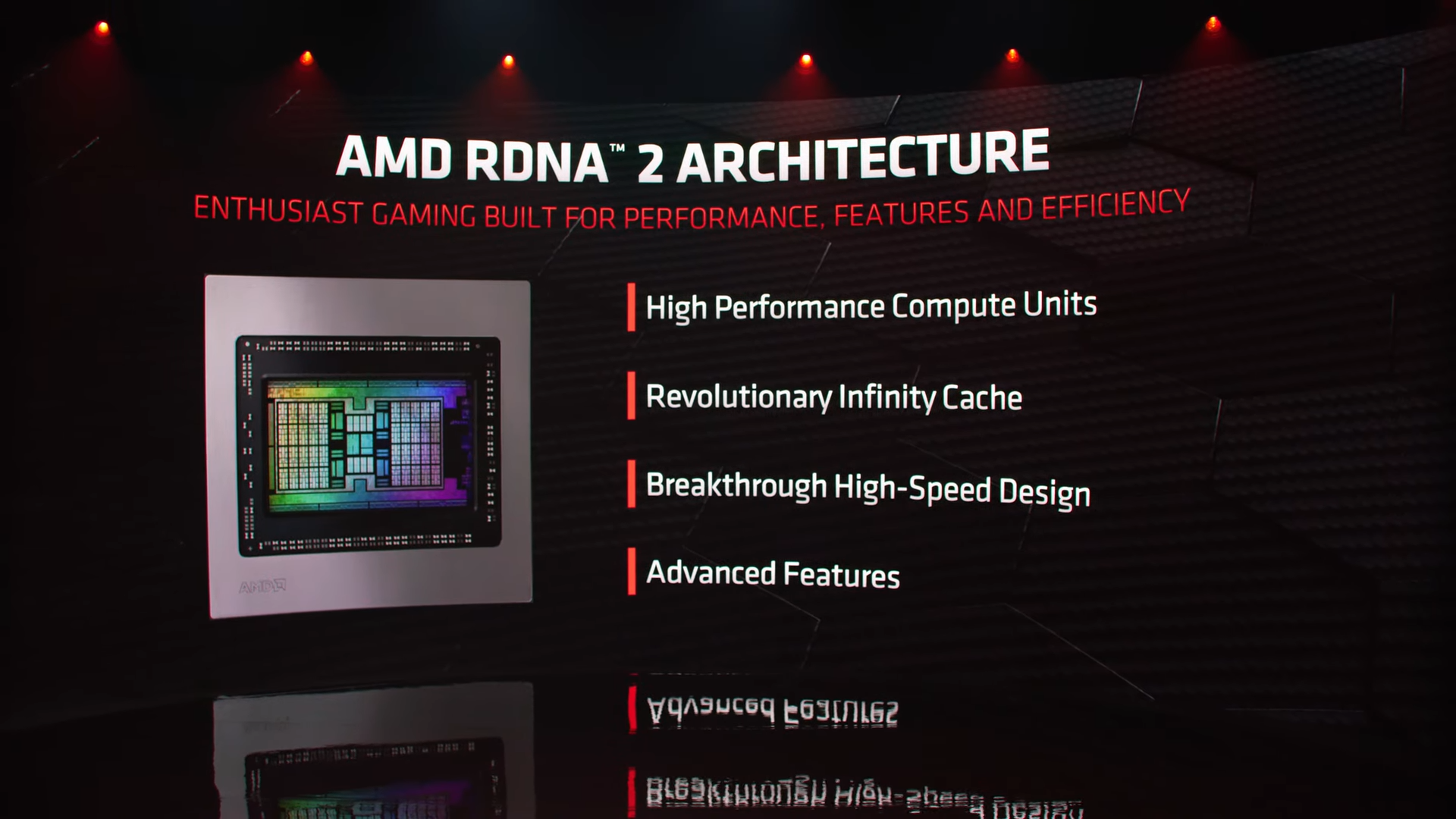
Radeon RX 6000 series graphics cards support PCIe 4.0. All RX 6000 graphics cards use GDDR6 memory. For comparison, the two older GeForce RTX 30 models use GDDR6X, which has twice the bandwidth.
The Radeon RX 6000 series is fully compatible with DirectX 12 Ultimate and DirectStorage technologies, including ray tracing acceleration. In this case, ray tracing will be processed by separate elements: for these purposes, a special accelerator - Ray Accelerator - is installed in the GPU on RDNA 2 in each computing unit. Also, AMD graphics cards received a special ray accelerator engine that allows you to optimize the calculation of lighting, shadows and reflections in real time using DXR.

Microsoft DirectStorage support will allow AMD graphics cards to load textures from the SSD directly into the video memory, thereby reducing the load on the processor and RAM. Its own analogue of DLSS is still under development.
All graphics cards based on the new RDNA 2 architecture are equipped with Infinity Cache technology. This high-speed 128MB GPU-based buffer allows for increased memory bandwidth (1,664GB / s with Infinity Cache versus 512GB / s with only 16GB GDDR6) and reduced power consumption over previous generations. In addition, the graphics cards will be equipped with a new Smart Access Memory solution that provides accelerated access to GDDR6 memory.
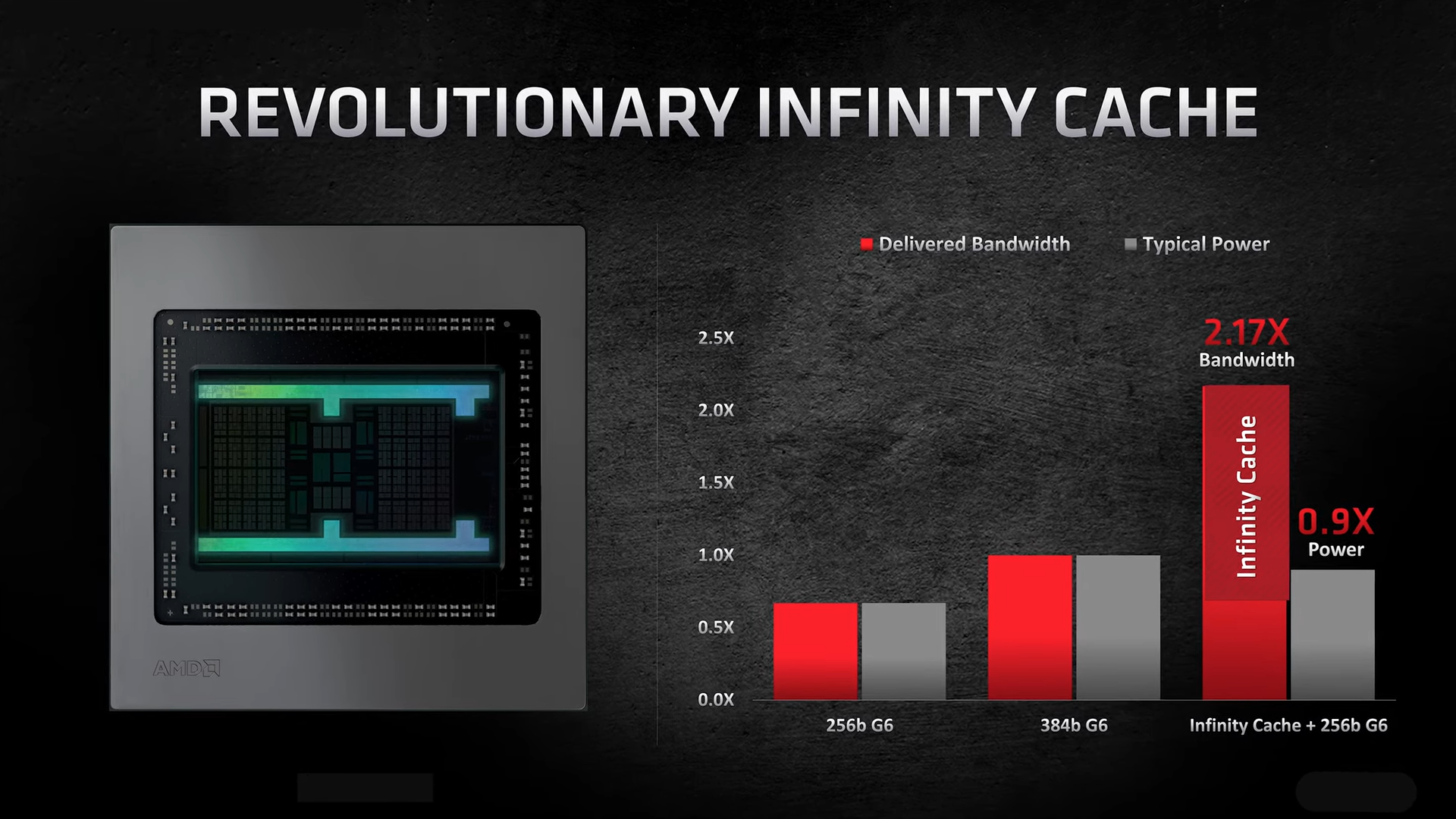
The graphics processor of the new AMD Navi 21 architecture contains 26.8 billion transistors and is manufactured at TSMC's 7nm technology.
Also in new video cards introduced technology to reduce input latency. Combined with FreeSync, it delivers up to 23ms latency in Fortnite (down to 40ms) and unlike NVIDIA Reflex, it doesn't require any add-ons from game developers.
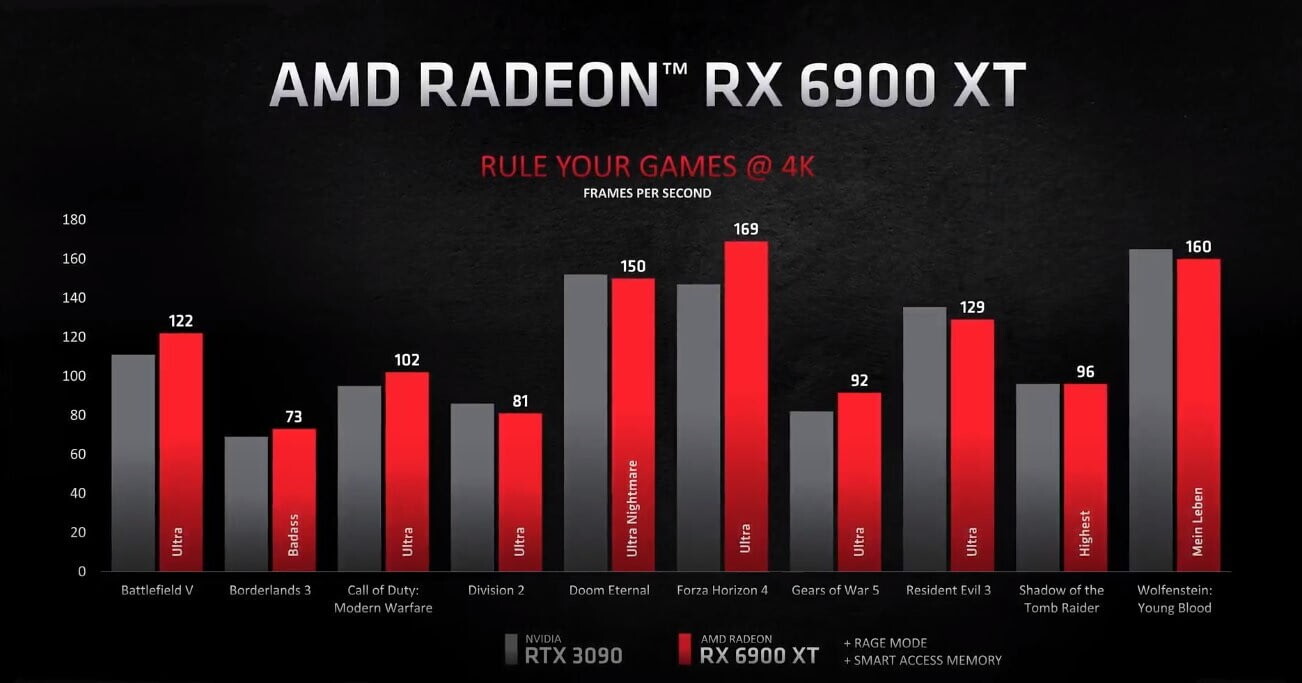
Also, owners of video cards will have access to Smart Access Memory technology, which synchronizes processors and video cards to increase their performance.
The new graphics cards are 267mm long and have two standard 8-pin power connectors, allowing gamers to get by with 650-750W PSUs.
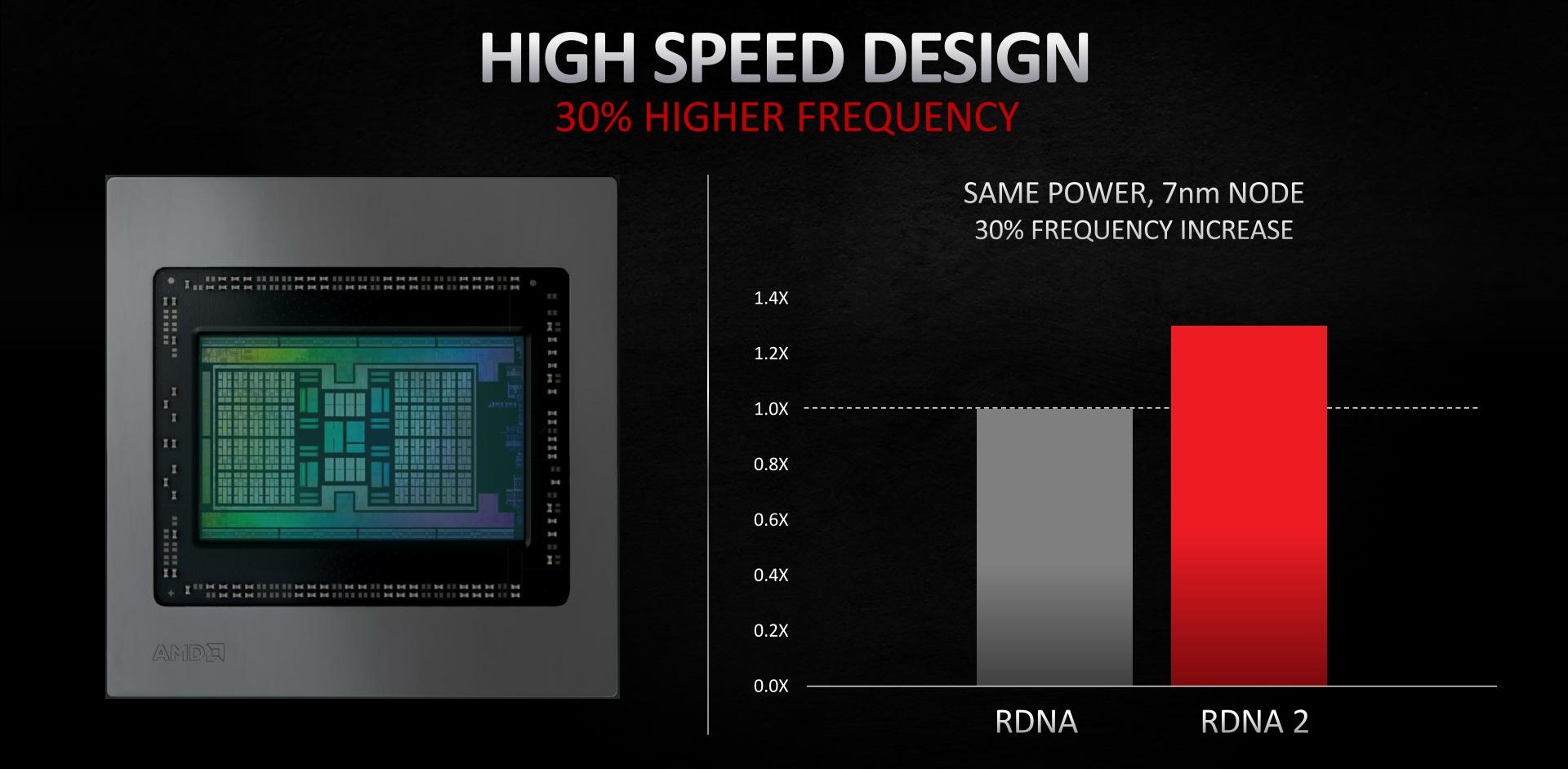
Compared to the GeForce RTX 2080 Ti, the new Radeon RX 6800 has better performance, which makes it comparable to the GeForce RTX 3070.


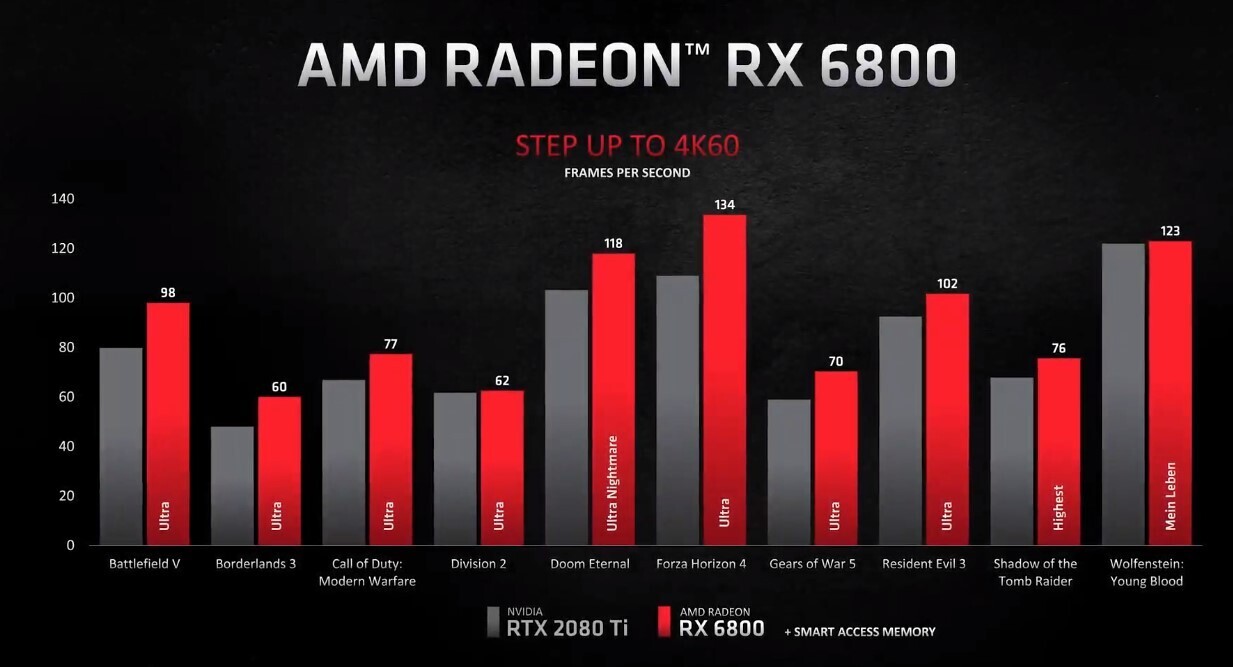
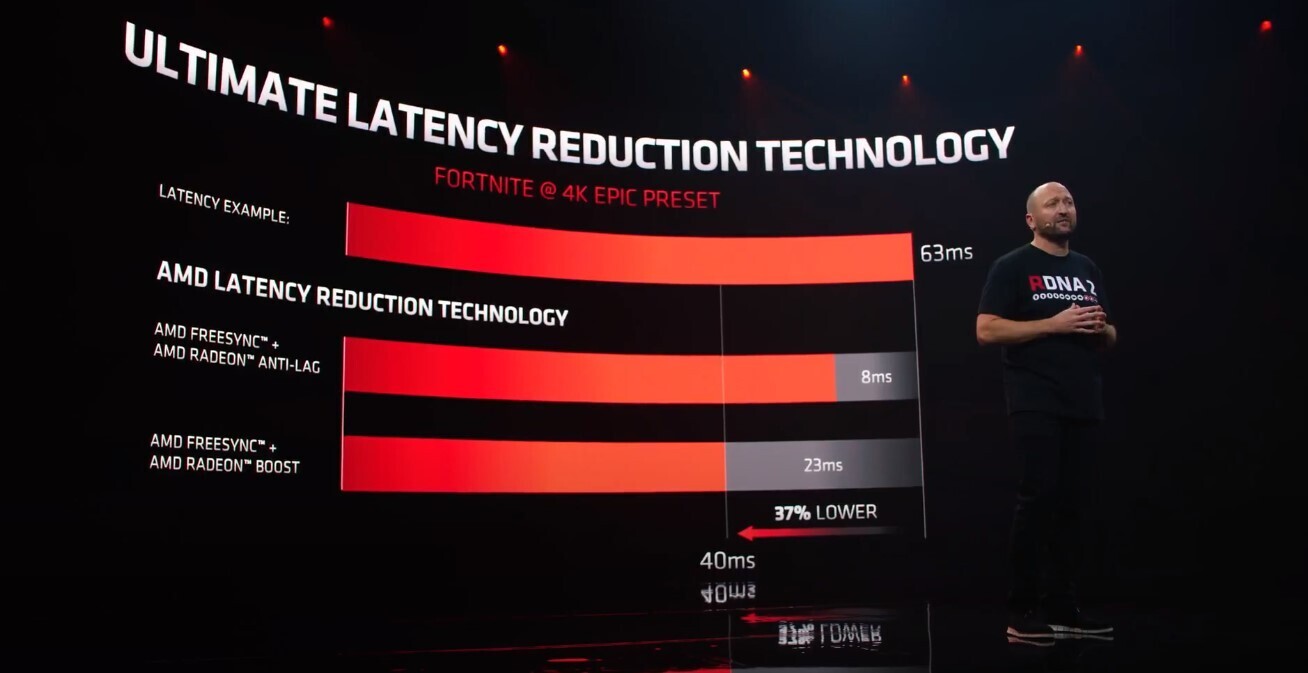
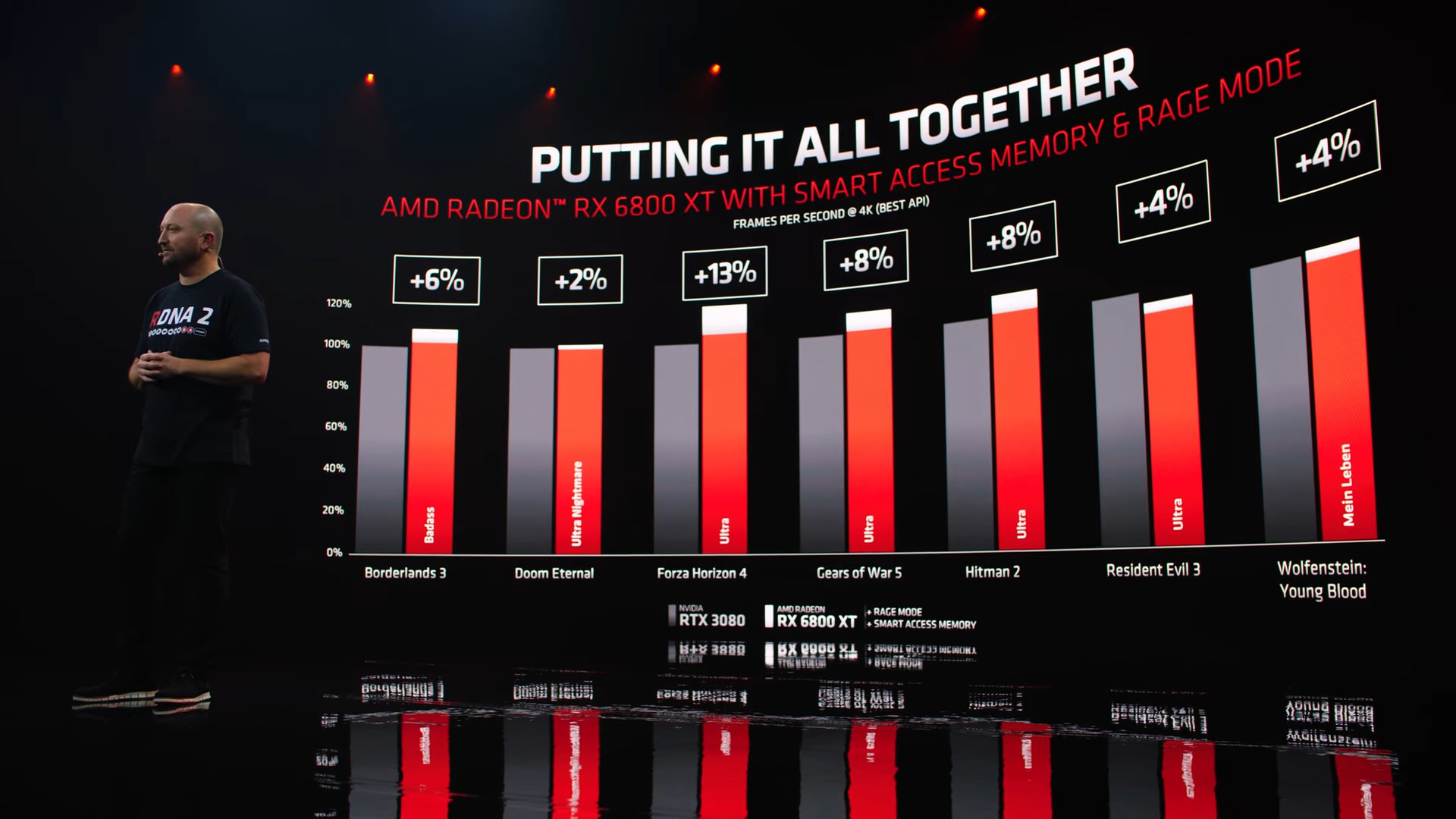
Three video cards will be released by the end of 2020:
- Radeon RX 6800 (slightly more powerful than RTX 3070, 16GB VRAM vs.8GB)
- Radeon RX 6800 XT (similar to RTX 3080, but with 16 GB of video memory versus 10 GB)
- Radeon RX 6900 XT (similar to RTX 3090, but with 16 GB of video memory versus 24 GB)
The first two will go on sale on November 18, the RX 6900 XT on December 8.